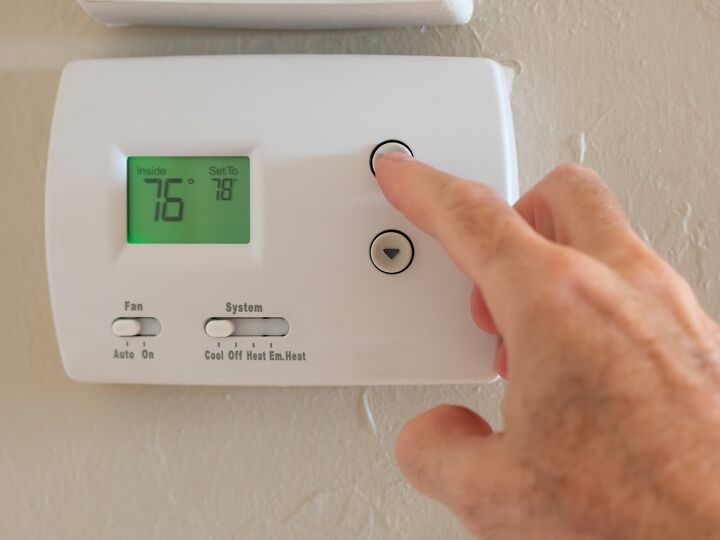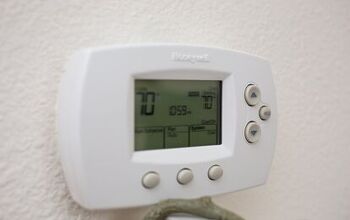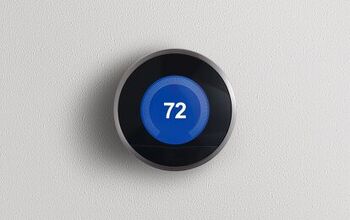What Does The Fan Setting On My Thermostat Do? (Find Out Now!)

Thermostats are a modern convenience, but they are only useful when you understand what they do. The fan setting on a thermostat can make all the difference when it comes to energy bills, air circulation, and indoor comfort. So, what does the fan setting on a thermostat do?
The fan setting on your thermostat turn’s the blower in your HVAC system on and off. You can set a blower fan to AUTO so that the blower turns on when the AC or furnace is running. An HVAC blower will continually run if you set it to ON through your thermostat.
Running the fan setting continually or on the ON setting has its pros and cons. Follow along as we explore the fan setting on your thermostat and see how it makes a difference.
Do You Need Thermostat Installation or Replacement Services?
Get free, zero-commitment quotes from pro contractors near you.

Thermostat Fan Setting
Switching a thermostat fan from one setting to another makes a bigger difference than you might think. Sure, switching the fan to ON can turn on the fans and allow them to continually run. However, running any home appliance continually has repercussions when it comes to energy costs.
It is common for homeowners and renters to find that their energy bills skyrocketed. A glance at the fan setting on your thermostat can often explain away that you possibly ran your air conditioner fan too often. Modern thermostats generally let you switch between two fan settings: auto, and on.
Auto
The AUTO setting on a thermostat is more energy-efficient than setting to ON all day. A thermostat’s auto setting programs the blower to kick on whenever the air conditioner turns on. Set your fan to auto during the summer to reduce the moisture in the air.
Moisture accumulates when you have an HVAC blower running at all times, and it can build up in the air. The auto setting can give your drainage system enough time between cycles to drain water outside. This comes in handy if you live in a humid climate or have factors that make your home susceptible to mold.
The main downside to the auto setting on a thermostat is that it can strain the blower. Blowers turn on and off more frequently on auto, and that can wear them out over time. However, turning your fan setting to auto can help keep your filters cleaner for longer, and that is worth it.
Pros
- Saves money on the electrical bill
- Reduces humidity in the house
- Makes furnace filters last longer
Cons
- Can wear out fan blower motors
- May not react quickly on old HVAC systems
On
It is inefficient to leave your fan setting on throughout the day, but it is convenient. The ON setting leaves your fan blowers on until you switch it off or to auto. Many homeowners reach for the thermostat to turn the fan on during hot summer days, and who can blame them?
Fan blowers can cool you off on a hot day and circulate warm air in the fall or winter. However, leaving your fan blowers on during cold weather can be a mistake. The fans often allow cool air into the house leading your HVAC system to exert more energy.
HVAC systems must work harder in hot and cold temperatures, and that makes for higher bills. Leaving your fan setting on all day can significantly increase your bills. However, thermostats have the on switch for a reason, and it comes in handy on hot days.
Pros
- Continual circulation helps keep the air clean
- Helps retain cool or warm temperature
- Allows you quick relief from cold or hot weather
Cons
- Expensive to leave fan blowers on continually
- Can filter cold or warm air into attics and behind walls
Related Questions
Do AC fans use a lot of electricity?
AC fans use a lot of electricity and it costs an average of $40 per month. You will spend roughly $480 per year on running air conditioner fans. Turn your fan setting to auto on the thermostat to save money and use less than 360KWh.
Should you run the fan on your air conditioner?
You should run your air conditioner fan on auto so that the fan only turns on when the AC runs. Run your AC fan on the ON setting to circulate the air on hot or cold days. The auto setting can wear out your air conditioner blower quickly, and running it continually can wear out your HVAC filter.
Does the AC fan bring in outside air?
AC fans do not bring air from outside unless there is a gap or leak in the system. Air enters an AC system because of the blower fan that runs during operation. The air cycles through filters and coils and is recycled throughout the house.
Do You Need Thermostat Installation or Replacement Services?
Get free, zero-commitment quotes from pro contractors near you.

Summing It Up
The fan setting on a thermostat lets you set the blower fan to run continually, or turn on automatically. Auto settings only run your air conditioner fan when the furnace or air conditioner is in operation. This option can save a small fortune in energy bills, but it can cause wear and tear on the blower itself.
Air conditioner blowers get worn down each time that they turn on and off, and that happens more frequently on auto. Turning your air conditioner fan on continually can increase your energy bills and wear out your filters quickly. Running an AC fan throughout the day can help circulate the air and keep it clean.
Leave your AC fan on auto to save money on energy bills and reduce humidity in the house. Running an AC fan all day can cause moisture to accumulate inside the house and create a muggy environment. Even still, it is okay to run your AC fan on hot or cold days to retain a comfortable temperature and circulate the air.
Related Articles

Nick Durante is a professional writer with a primary focus on home improvement. When he is not writing about home improvement or taking on projects around the house, he likes to read and create art. He is always looking towards the newest trends in home improvement.
More by Nick Durante
























![Standard Dining Room Table Dimensions [for 4, 6, 8, 10 and 12 People]](https://cdn-fastly.upgradedhome.com/media/2023/07/31/9074335/standard-dining-room-table-dimensions-for-4-6-8-10-and-12-people.jpg?size=350x220)


